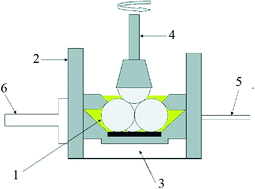Effect of gasoline–bioethanol blends on the properties and lubrication characteristics of commercial engine oil
Abstract
Concerns over depleting fossil fuel reserves, energy security, and climate change have resulted in stringent legislation demanding that automobiles use more renewable fuels. Bioethanol is being given significant attention on a global scale and is being considered as a long-term gasoline replacement that helps reduce exhaust emissions. The piston ring and cylinder wall interface is generally the largest contributor to engine friction and these regions of the engine also suffer the highest levels of fuel dilution into the lubricant from unburned fuel, especially for bioethanol as it has a high heat of vaporization, which enhances the tendency of the fuel to enter the oil sump. As bioethanol is being blended with gasoline at increasingly higher concentrations and the accumulation of fuel in the crankcase is significant, it is crucial to study the effect of various bioethanol blends on the degradation of engine oil's properties and the friction and wear characteristics of engine oil. A fully synthetic oil was homogenously mixed with five formulated fuels such as gasoline blend (E0), gasoline–10% ethanol (E10), gasoline–20% ethanol (E20), gasoline–30% ethanol (E30), and gasoline–85% ethanol (E85). These mixtures were then tested in a four-ball wear tester according to the ASTM D4172 standard test. Under selected operating conditions, the results show that the addition of a gasoline–bioethanol blend decreases the oil viscosity, whereas the acid number increases because bioethanol is more reactive compared to gasoline, which enhances oil degradation and oxidation. Fuel dilution reduces the lubricating efficiency and the wear protection of the engine oil. All fuel-diluted oil samples have higher friction and wear losses, compared to the fresh synthetic oil. E10 has slight effects on the friction and wear behaviors of the engine oil. Thus, it still has a high potential to be widely used as a transportation fuel for existing gasoline engines.



 Please wait while we load your content...
Please wait while we load your content...